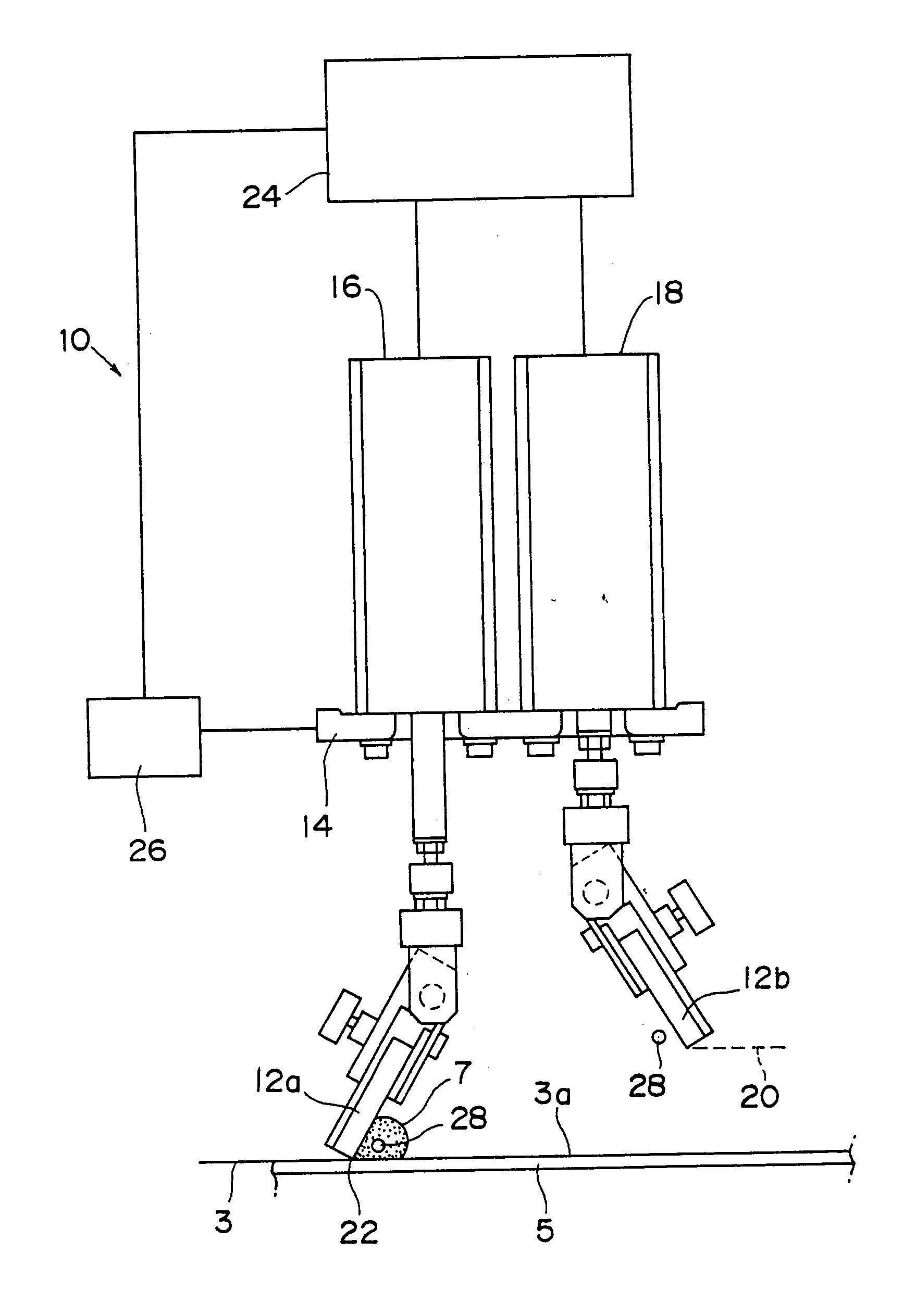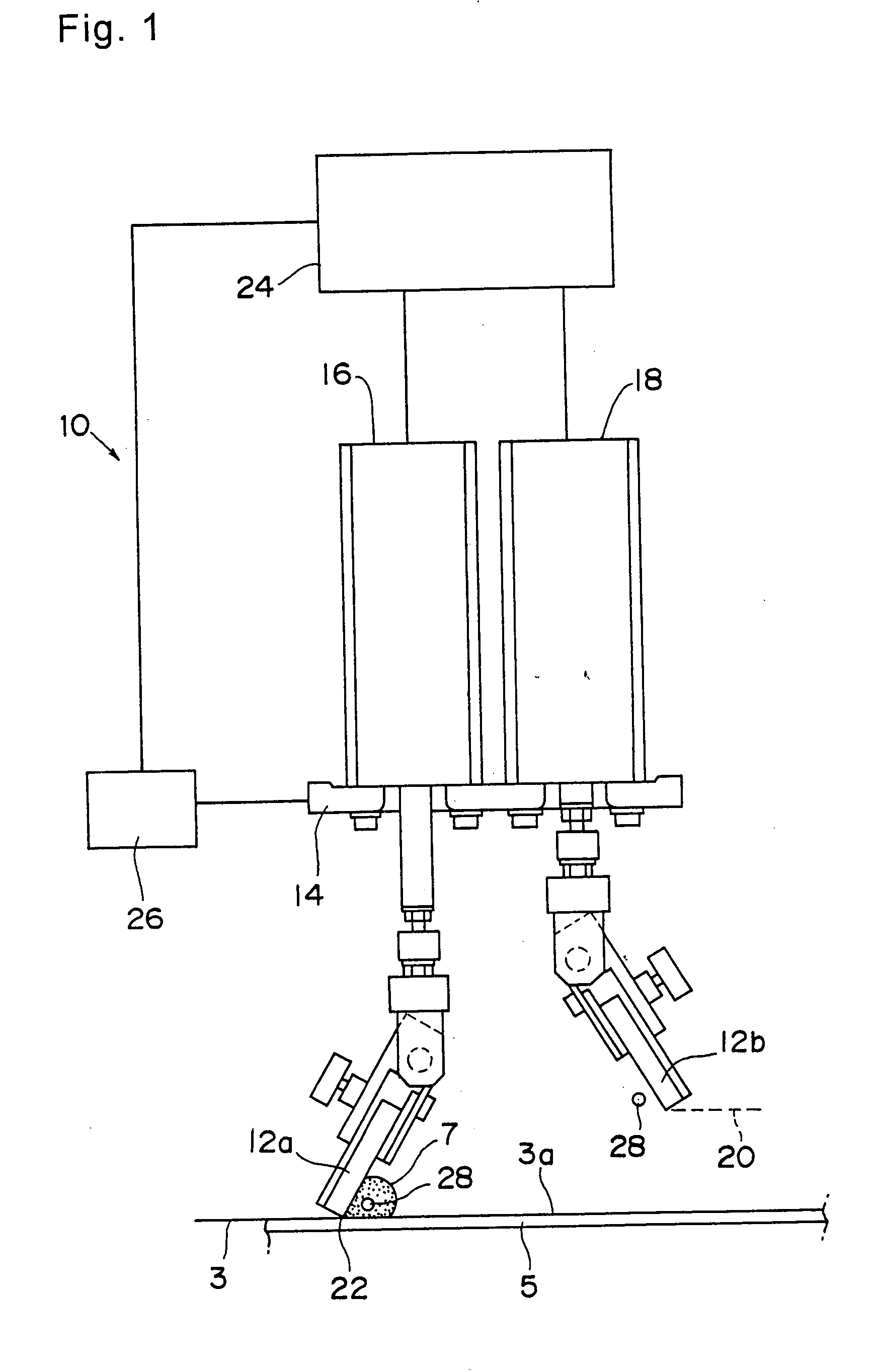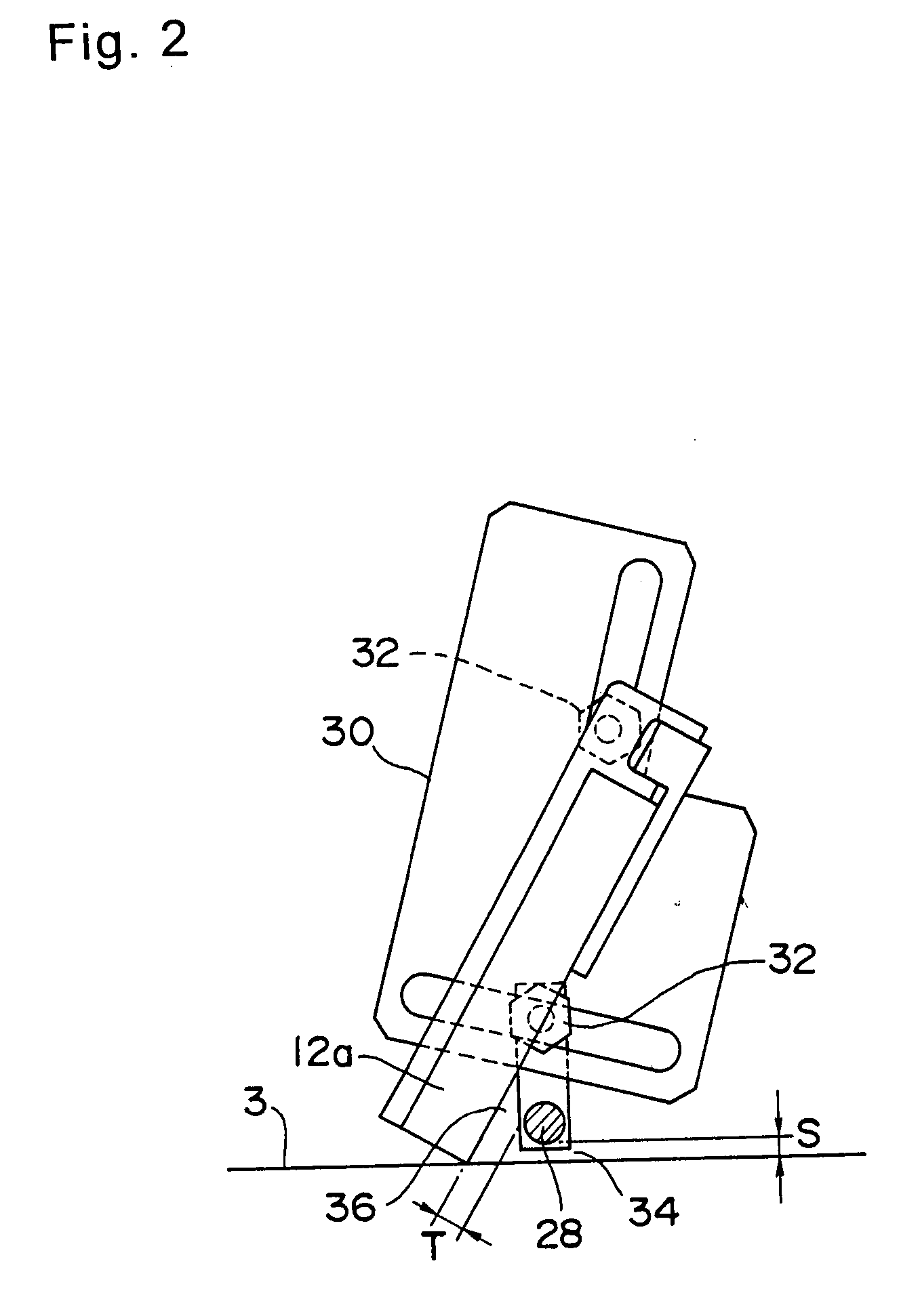Solder past printing apparatus and printing method
a printing apparatus and printing method technology, applied in the direction of printing apparatus, manufacturing tools, conductive pattern formation, etc., can solve the problems of insufficient filling time, disadvantageous generation of unfilled portion 9, and defective printing, so as to achieve further reduction of printing time
- Summary
- Abstract
- Description
- Claims
- Application Information
AI Technical Summary
Benefits of technology
Problems solved by technology
Method used
Image
Examples
working example 2
[0249] In the working example 2, the printing conditions depending on a change in the cross-section shape of the pressurizing member was observed. Other printing conditions are roughly similar to those of the working example 1.
[0250] Sample e: a circular cross-section having a diameter d of 5 mm.
[0251] Sample f: a semicircular cross-section having a diameter d of 5 mm, and the angle .theta. with respect to the printing mask is set to 30 degrees (FIG. 6).
[0252] Sample g: a semicircular cross-section having a diameter d of 8 mm, and the angle .theta. with respect to the printing mask is set to 30 degrees (FIG. 6).
[0253] Sample h: a semicircle having a diameter d of 8 mm is processed into a wedge-shaped cross-section with an angle .beta. set to 30 degrees leaving the diametrical surface, and the angle .theta. with respect to the printing mask is set to 30 degrees (FIG. 7).
[0254] Sample i: a circular cross-section having a diameter d of 6 mm.
[0255] Sample j: a circular cross-section hav...
second embodiment
[0264] Moreover, particularly in the second embodiment, a pair of squeegees 12a and 12b is provided, and both the squeegees 12a and 12b are consistently brought in contact with the printing mask 3 at least during printing. Therefore, the take-out of the solder paste 7 by the rising squeegees 12a and 12b is prevented, and the set amount of solder paste 7 can be consistently held on the printing mask 3. Moreover, neither the squeegee 12a nor 12b vertically moves during printing. Therefore, the printing time can be reduced, and the productivity can be improved.
[0265] Moreover, as shown in FIG. 26A, if the printing is repetitively performed with the conventional construction, the solder paste 7 is protruded from both sides of the squeegee 12a. The solder paste 7A protruded therefrom does not naturally return, and the operator collects and puts back the paste at regular intervals of time or dispose of it. In contrast to this, by applying a pressure to the solder paste 7 with the pressuri...
third embodiment
[0271] (Third Embodiment)
[0272] In the solder paste printing apparatus of the third embodiment of the present invention, as shown in FIG. 20 through FIG. 23, the pressurizing member 28 of a round bar is rotated in the direction opposite to the rolling direction of the solder paste 7.
[0273] The pressurizing member 28 of a round bar is rotatably supported by a pair of brackets 30 and 30, one end of the pressurizing member 28 is made to project from one bracket 30, and a pulley 53 is fixed to the projecting end. A motor 49 is arranged in the vicinity of the pressurizing member 28 of the one bracket 30, and a pulley 52 fixed to a rotary shaft of motor 49 and the pulley 53 located at the projecting end portion of the pressurizing member 28 are connected to each other by means of a belt 54. With this arrangement, if the rotary shaft of the motor 49 is rotated counterclockwise in FIG. 20, then the pressurizing member 28 is to be rotated counterclockwise (in a direction of the arrow Y in FI...
PUM
| Property | Measurement | Unit |
|---|---|---|
| travel speed | aaaaa | aaaaa |
| travel speed | aaaaa | aaaaa |
| height | aaaaa | aaaaa |
Abstract
Description
Claims
Application Information
 Login to View More
Login to View More - R&D
- Intellectual Property
- Life Sciences
- Materials
- Tech Scout
- Unparalleled Data Quality
- Higher Quality Content
- 60% Fewer Hallucinations
Browse by: Latest US Patents, China's latest patents, Technical Efficacy Thesaurus, Application Domain, Technology Topic, Popular Technical Reports.
© 2025 PatSnap. All rights reserved.Legal|Privacy policy|Modern Slavery Act Transparency Statement|Sitemap|About US| Contact US: help@patsnap.com



